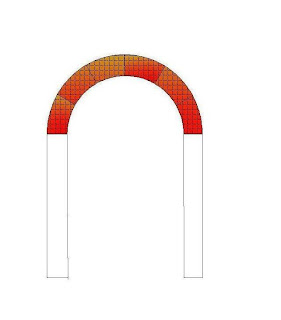KEY WORD: SKETCH, LAYOUT, CAD, DRAWING, SCALE, HEIGHT-WIDHT-DEPTH. BOOK: UNIT 3. "COMPARISON". - Proporsions (noum/adjetive): LENGTH/LONG - HEIGHT/HIGH - WIDTH/WIDE.- Comparatives and superlatives forms: -er/more than; -est/the most. - Use "ONE" when someones has already mentioned a thing. INDEX 1º INTRODUCTION. 2º SYSTEMS IN TECHNICAL DRAWING 3º MEASUREMENTS. 4º SCALES 1º INTRODUCTION: Design ideas can be communicated in many different ways.The most common method of communicating ideas is through drawings and sketches. These can be used to communicate to clients, end users, manufacturers and other designers or experts, to name a few.Designers use also very often sketches to communicate to themselves. Sketching ideas on paper helps them to visualize products more fully and examine problem areas better. It also frees up their minds, allowing them to develop new ideas: EG. PREHISTORIC CAVE PAINTING, RENAISSANCE PERSPECTIVE, ABSTRACT PAINTING, PERSPECTIVE DRAWING, 3D DRAWINGS, DIGITAL ALTERARED PHOTOGRAPH. (Introduction to the unit and activities of views--->LINK HERE: Theory&Activities) ACTIVITIES Nº1. 1.1.- Match the correct word of this definitions:a) We use it to measure angles: protractor b) We use it to draw parallel and perpendicular lines:square c) We use it to draw arcs and circumferences:compass d) We use it to measure the length of lines:ruler. 1.2.- Using M.Paint, draw the following picture, listing the description: LINK. ACTIVITIES Nº2. 2.1. Using the computer, draw the following arches using AutoCAD.(open hereTechnical drawing can be made using three different methods:
|
ACTIVITIES Nº3:
3.1.In your blog, match and complete the sentences:- With a pair of compasses, we can draw arcs.
- With a set square, we can draw parallel lines.
- With a protactor, we can measure angles.
- With an oblique system, we can represent an object like we see it.
- With the conical system, we can represent together of the views of an object. (...measure angles. /...represent together of the views of an object. /...draw arcs./...draw parallel lines. / represent an object like we see it.)
3.2. Sketch with guidelines in M.PAINT: A PRINTER and A RECEPTABLE of this sheet--->Link here: Skecth
3.3. Draw TECHNICAL DRAWING using M.PAINT of the PLAN VIEW and FRONT VIEW of a pen with the lid on.
3.4. In the before exercise, do you need to draw the SIDE VIEW? Why?
e) Draw in M.PAINT the VIEWS of the exercicies at the end of this slides (PIEZA Nº5,6,7,8.)--->LINK HERE: VIEWS
3.5. Draw your first capital letter using the CONICAL PERSPECTIVE CONICAL with M.PAINT.
3º MEASUREMENTS.
The measurements or dimensions are used to understand the overall size of a drawing. They have three items:
- EXTENSION LINES: It should not touch the drawings and must be extended beyond the drawing.
- DIMENSION LINES: It´s an arrow.
- FIGURES: It´s the number that show the real dimension, it´s draw over the arrow.
You need to scale objects and products as in many cases they are far too big (or too small) to be able to draw their actual size on paper.
Scale is the expression of the “measurement of the DRAWING SIZE divided by measurement of the ACTUAL SIZE”.
We need draw the object with different scales when it is not possible draw your layout to full size. There are three types:
- NATURAL SCALE or FULL SIZE: The object fit properly into your notebook, so you draw it in the same dimensions that it actually is. 1:1
- INCREASE SCALE. When you enlarge the object that it actually is. E.g. a ring, a tack, a chuck, a nut, etc. 2:1
- REDUCCTION SCALE: When you reduce the object than it actually is because it´s very large and not fit into your sheet. E.g. 1:10
ACTIVITIES Nº4.
4.1.What scale would you use to draw a SPOON on A4 paper?1:14.2.What scale would you use to draw a BOOKSHELF on A4 paper?2:1
4.3.What scale would you use to draw a NEEDLE on A4 paper?1:2
4.4. Copy the sentences in your Blog and complete then with the apropiate words:
a) An object is _smaller_____ thant the drawing in an enlarged scale.
b) W use a scale 1:1 to read the measurement of a scale.
c) The drawing is smaller tha the object in 2:1 scale.
ACTIVITIES Nº5.
5.1. Draw the views of the picture:




